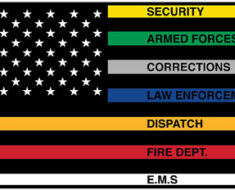
UTEP
Closed captioning has been around for a long time, but there is still some debate over whether or not it actually helps kids learn to read. Some people believe that it can help children with dyslexia, and others think that it is just a helpful tool for all kids. In this article, we will take a look at the research on closed captioning and learning to read, and see what the experts have to say about it.
Closed Captioning Definition
Closed captioning is the process of displaying text on a screen to provide additional or interpretive information. The text is typically a transcription of the audio track of a movie or television program. Closed captioning is required by law in many countries for some programming, and is also commonly used for movies shown in theaters.
In addition, closed captioning can be very useful for people who are deaf or hard of hearing, or who speak languages other than English. Closed captioning can also be used to provide translations of dialogue into other languages, or to display lyrics for songs.
In some cases, closed captioning may also be used to provide sound effects or other audio information that is not part of the main soundtrack. Closed captioning systems typically use either an on-screen display or a separate decoder box to interpret and display the text. Closed captioning can also be implemented using software that runs on personal computers or mobile devices.
How to Add Closed Captions to Your Videos
Adding closed captions to your videos is a great way to make them more accessible to a wider audience. Here’s a quick guide on how to add closed captions to your videos:
- Start by creating a transcript of your video. This can be done using a transcription service or by transcribing the video yourself.
- Once you have a transcript, you can create the closed captions using closed captioning services or by hiring a professional voice actor.
- Once the closed captions are created, you can then add them to your video using video editing software or an online tool.
- Finally, be sure to proofread the captions before publishing your video. This will help ensure that they’re accurate and easy to understand.
Is It Effective in Improving Reading and Literacy?
While closed captioning can be a useful tool for viewers who are deaf or hard of hearing, there is also evidence that it can improve reading and literacy skills for all viewers. Numerous studies have found that captioning can help to improve reading comprehension, vocabulary, and overall literacy skills.
In one study, elementary school students who watched captioned videos showed significant gains in reading ability, while another study found that adults who watched captioned videos performed better on reading comprehension tests.
Additionally, captioning can also be beneficial for English language learners, as it provides a written record of the dialogue that can be referenced later. While more research is needed to confirm these findings, the existing evidence suggests that closed captioning can be a valuable tool for improving reading and literacy skills.
The research also checked the effect of live captioning on the reading and literacy skills of children and found that it may have a positive impact as well.
The following reading skills are strengthened by captioning and subtitles, according to several studies:
-Reading speed
-Reading comprehension
-Vocabulary acquisition
-Overall literacy skills
The research suggests that captioning can be a valuable tool for improving reading and literacy skills, particularly for English language learners and elementary school students. However, more research is needed to confirm these findings.
Additionally, captioning is a wonderful and simple tool that can and should be used both in and out of the classroom. In addition to being a popular form of entertainment, video is also widely used in education. You can help your child learn easily by turning on captions.
Conclusion: Does Closed Captioning Help Kids Learn to Read?
The jury is still out on whether closed captioning helps kids learn to read. Some studies have shown that kids who watch shows with closed captioning have better reading comprehension than those who don’t, while other studies haven’t found a significant difference.
It’s possible that closed captioning may help some kids learn to read more effectively, but more research is needed to confirm this.
In the meantime, there’s no harm in letting your kids watch shows with closed captioning, as it may give them a boost in reading comprehension.









































